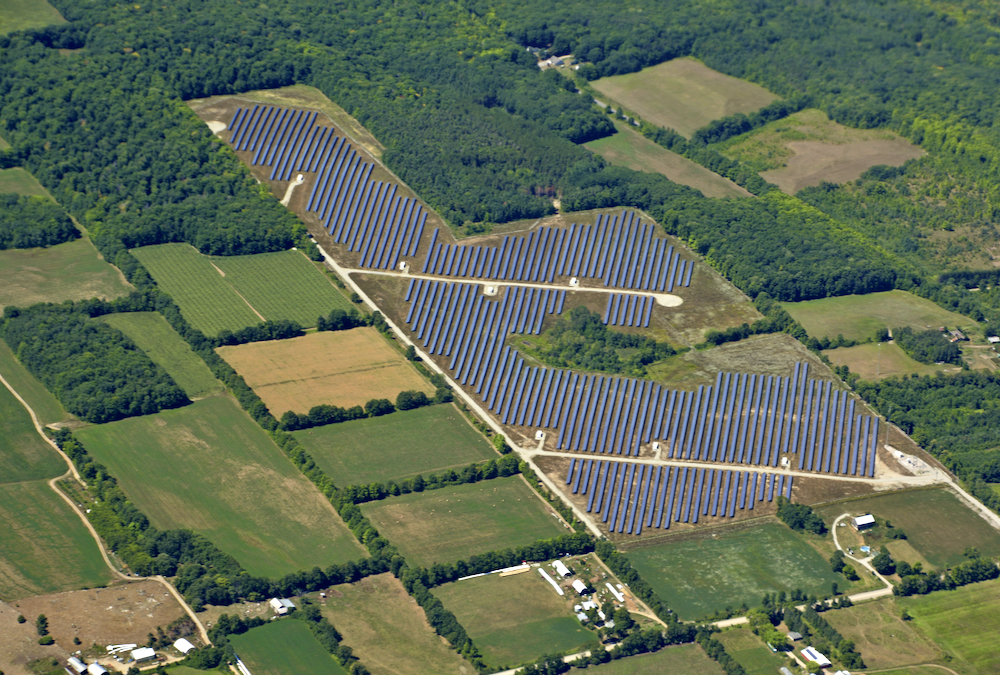Consider for a moment what Canadian agriculture would look like today if farmers had never made the switch from horse power to tractor power. It isn’t such an absurd idea if you understand why farmers here actually resisted mechanization when it first appeared roughly a century ago.
An interesting read is the text of the speech called “An Economic Comparison of the Horse Vs. Motor” that H.L. Hare of the University of British Columbia, gave to the North Western Veterinary Association in the early 1920s. His paper was subsequently published in the Canadian Veterinary Record (Volume 4, No. 4, 1923).
Read Also

The big squeeze: How to be fair to siblings during farm succession
Managing sibling business relationships on family farms.
Hare presented case after case from right across Canada showing that horses were more economically efficient than tractors and trucks. For example, he told of the experience of C.S. Noble of Alberta who in 1918 and 1919 used both trucks and horses to haul grain 20 to 30 miles from the 30,000-acre ranch he was managing to the nearest grain elevators.
Hare wrote: “… even on this long haul, Mr. Noble states that freighting can be done more economically with horses.”
Hare backed up the individual cases with statements from revered agricultural educational institutions such as the Ontario Agricultural College, which concluded: “Farm tractors have been used with some degree of success, but speaking generally they have not been a success with the average farmer… ”
Then Hare presented studies from the U.S. Department of Agriculture, the Purdue Agricultural Experimental Station, and the Dominion Experimental Farm at Prince Edward Island. All showed the cost per acre of operating a tractor was higher than doing comparable work with horses.
Finally, Hare presented evidence that after their initial tractor purchases, many farmers soon went back to horses.
Hare concluded, “Greater production was achieved but at the expense of economy. Now that the war is over, efficiency and economy are the slogans and we find that horses are fast coming back to their field.”
So why did farmers make the switch to the tractor?
While some farmers chose to become early adopters of mechanization, most North American and European farmers were, instead, pushed into the switch.
The First World War had drained farms of both horses and manpower, and farmers were forced to find alternative crop production methods.
This also explains why the number of tractors and trucks sold to farmers actually declined following the war, when government demand for horses dropped off and soldiers returned to farms and rural communities.
Why history repeats
Today farmers are facing a similar scenario. Society is demanding a cleaner, greener world, and modern agriculture is again caught in the middle.
It is irrelevant whether you as an individual believe in climate change or the need to reduce greenhouse gas emissions. Society as a whole does, and it is taking action to reduce man’s carbon footprint globally. Modern agriculture will have to get on board whether we like it or not.
Most Canadian farmers simply cannot understand society’s obsession with reducing fossil fuel use. We live in a relatively pristine environment, and if we travel at all, it is likely to be to an even cleaner, greener place like the mountains, northern lakes, or first-class resorts in Mexico, Hawaii or the Caribbean.
However, those postcard-perfect places are not at all like the world that most of the global population resides in.
If you travel to India or China or any major city in the world, you’ll experience the pollution they live with. In coastal cities worldwide, as well, you will see first-hand the impact of rising ocean levels. Travel to many equatorial regions and you will see the effect of prolonged drought in the form of dry lake beds and parched soils.
Want to experience the Arctic? No problem; you can even take a cruise ship through the Northwest Passage where just a generation ago no ships could sail.
Now, too, there is an overwhelming consensus among scientists that man is contributing to these environmental and climate change issues.
This is the evidence that is leading societies worldwide to adopt measures designed to reduce man’s footprint; from putting a price on carbon to restricting the use of some energy sources like coal and moving to renewable energy sources like wind, water and solar generation.
The switch to solar
Without question, the energy source with the greatest potential at this time is solar. We now have the technology to efficiently collect solar power, and in most areas the grid is already in place to distribute power.
But, like our forefathers balking at the use of tractors, the resistance to solar is huge, especially among western Canadians who have become dependent on the resource industry.
Go into any coffee shop and you’ll hear complaints about the carbon tax and how solar power could never work in the frozen north where we live. You will hear how solar is way too expensive and will never be competitive with fossil fuels, even if it could be generated here.
Farmers complain about the potential loss of farmland for all the solar panels that would be needed. And you will hear over and over again that the politicians who want to shut down the oil sands are basically destroying the economy of Canada simply to appease environmentalists and to clean up the problems of the third world.
But are these doomsday claims accurate?
Just 40 years ago, the United Arab Emirates was a sparsely populated, nomadic desert. Now, it is a globally recognized urban paradise, primarily funded by the sale of oil and natural gas.
But rather than defending the use of the fossil fuels that are the backbone of their economy and that power the mega cities of Abu Dhabi and Dubai, and that even desalinates the sea water needed for the greening of the desert, the UAE is at the forefront of solar power generation.
Dubai Clean Energy Strategy’s goal is that seven per cent of Dubai’s energy will come from solar power by 2020, 25 per cent by 2030 and 75 per cent by 2050. Rather than continuing to base their economies on a finite resource, they see the future in solar power generation.
Nor is solar nearly as unaffordable as we are being led to believe. The Earth Policy Institute chart shows the price of a solar panel per watt of power generated has declined from US$101.05 in 1975 to US$0.61 in 2015. As a result we have seen solar panel generation go from just two megawatts to 64,892 megawatts over the same 40-year period. And there is no indication either trend will slow or stop.
In September 2016, Bloomberg.com reported that government-owned Abu Dhabi Water and Electricity Authority received a record-low bid of US$2.42 cents a kilowatt-hour for power from a planned facility in the Persian Gulf sheikhdom. This bid was for construction and operation of a 350-megawatt solar plant.
Bloomberg noted this is cheaper than the $2.91/kWh bid made last August in Chile for a solar power plant, or the $2.99/kWh bid for a Dubai solar plant made in May 2016. It went on to point out that these bids reflect a drop of 70 per cent in just the last five years.
Some farmers may argue that solar works in the UAE because it is much farther south and it is in a hot, dry desert location. But such a location is not a requirement for solar generation.
Wikipedia lists the installed PV solar generation by country as of 2015 and the country with the highest solar electrical generation is actually China (43,530 MW), followed by Germany (39,700 MW), Japan (34,410 MW), United States (25,620MW), Italy (18,920 MW), United Kingdom (8,780 MW), France (6,580 MW), and Spain (5,400 MW).
The claims about solar panels displacing farmland are also misleading. Solar panels can be incorporated into existing structures or be built on non-farmland.
Dr. Mark Jacobson, professor of civil and environmental engineering at Stanford was lead author of a 2015 paper entitled “100% clean and renewable wind, water, and sunlight (WWS) all-sector energy roadmaps for the 50 United States.” This paper presents a plan for converting the electricity, transportation, heating/cooling, and industry energy requirements for every U.S. state to 80 per cent renewables by 2030 and 100 per cent by 2050. The plan calls for almost half of the energy to be solar, and it says solar collectors would cover less than 0.42 per cent of the U.S.
Compare that land requirement to the massive acreage currently dedicated to biofuel production. Over 40 per cent of the corn crop is used to produce ethanol. And even then, says Dr. Roland Geyer of the Bren School of Environmental Science and Management in Santa Barbara, if the entire corn crop would have been converted to ethanol in 2009, it would have met a mere 17 per cent of the U.S. gasoline needs.
To be fair, the dry distillers grain that remains after ethanol is produced can be used in feed rations. But even after deducting an area amount equivalent to the feed value of DDGs, still 25 per cent of corn acres would be taken for fuel production. And don’t forget, there are significant energy inputs required for corn ethanol production including crop inputs, equipment, fuel, distilling, storage, and transportation.
According to Geyer: “Solar power generation is ‘hands down’ more efficient than photosynthesis.” He has compared photovoltaic electrical generation with biofuel production and found “even the most land-use efficient biomass-based pathway (i.e. switchgrass bioelectricity in U.S. counties with hypothetical crop yields of over 24 tonnes/ha) requires 29 times more land than the PV-based alternative in the same locations.”
Geyer also notes that PV solar produces usable energy throughout the year, whereas you only get one harvest a year of corn for ethanol.
The one hurdle that must be overcome for solar power to be successful in a northern country like Canada is storage of energy for use when the sun is not shining. Our long winter nights magnify this problem. But our long summer days make solar generation even more viable if power can be stored.
And science is working on this. Just last fall it was announced ethanol could be created from CO2. Such a process could solve energy storage problems and also reduce the greenhouse gas worries. What was not detailed was how much energy is required to convert CO2 to ethanol. Yet, if we have excess power generation from solar during the day, would it be economically feasible to convert CO2 to ethanol to provide fuel for power generation at night?
Or what about simply pumping water up behind a dam using solar-powered pumps when the sun is shining, and relying on hydroelectric generation from that stored water at nights.
Regardless, society’s demands for clean energy will disrupt farming as we know it.
Not only will we have to consider new energy sources, but even crop choices will change. Millions of acres of oats, grass, and other feeds that were consumed by draft animals had to change to other crops when tractors and trucks replaced horses. The same thing will happen to the millions of acres of corn wheat and soybeans that are now utilized as biofuels.
The one thing we cannot do is simply sit back and watch as the rest of the world switches away from fossil fuels, or we will end up a third-world producer just like the countries that continue to rely on human and bullock power today.
Simply blaming our current governments will not change this.

















